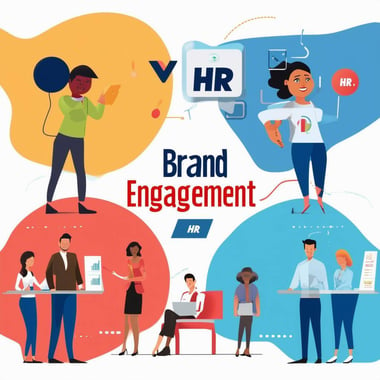
Unlocking the collective power of brand and employee

Australian businesses are increasingly embracing a concept that leading North American and European businesses have understood for some time - that linking marketing and HR is good for business.
Damian Borchok, CEO at Interbrand Australia, shares the latest trends in brand engagement strategies and how a fresh approach is delivering great results...
At Interbrand, we've been seeing a paradigm shift lately in brand engagement programs for employees across various sectors including professional services, retailing, banking, engineering and government.
The latest generation of brand engagement programs goes well beyond the typical internal Comms initiatives of old -- perfunctory events that comprised little more than a staff launch party where employees received a mouse mat, t-shirt and screensaver featuring the latest corporate values. These fleeting efforts were intended to have a deep and lasting impact on business performance, but rather than unleashing greater commitment, they usually cultivated cynicism among employees.
Engagement programs of recent are very different in both their approach and their results.
Firstly, they recognise the link between marketing and HR and that by aligning activities there is a higher likelihood of consumer and employee satisfaction. In this new context, rather than being "owned" by the marketing department as a vehicle for appealing to consumers, a company's brand becomes important to employees.
This model parallels the logic of James Heskett et al in their study Putting the Profit-Service Chain to Work. The study showed that firms adept at coordinating the links between employee satisfaction and delivering quality customer experiences were rewarded by greater customer loyalty and higher returns and profitability.
Secondly, successful brand engagement programs deliver a greater depth of approach. Communications is only one aspect of what is an ongoing and coordinated program of engagement. There are four layers to successful brand engagement:
Lead: Leaders are the front line of engagement. It isn't something they delegate. They are role models and their decisions shape and influence the success of the engagement.
Inform: This is the Comms bit. The dialogue (and it is a dialogue, not a monologue) is an ongoing one. It is important to be always communicating what the brand stands for, why it is important and what it means for employees personally and collectively.
Engage: Internal Comms programs often assume that once employees are exposed to their new values, behaviours and attributes, they can turn them on like they would their PCs. The transition is more complex, especially when you consider a large proportion of employees will already have well-established work patterns. Asking them to internalise a list of new words and reshape their behaviour is unrealistic. The engage component in brand engagement emphasises a learning-by-doing approach. "On brand" behaviours are established over time and as part of systematic development programs that focus on demonstrating how the new behaviours fit with the day-to-day activities of employees.
Align: Lastly, "on brand" behaviour is connected to HR activities including employee recruitment, performance and reward systems. This may extend to employee value propositions, KPIs, rewards, training programs and recruitment policies. Measurements are also established that don't simply look at employee engagement in isolation but the interrelationship between employee performance, brand and business performance.
Damian Borchok, CEO, Interbrand Australia
Damian Borchok is CEO of Interbrand Australia. Interbrand is the world's leading brand consultancy. It creates and manages brand value by making the brand central to a company's strategic aims. Please send any comments or questions you have in relation to this article to: Damian.Borchok@interbrand.com.au
Related


Stay ahead of the EOY crunch with contracting
Even though December comes around the same time every year, somehow it still manages to hit us with...
.jpg?width=352&name=FMCG%20Sales%20-%20Blog%20(3).jpg)
FMCG Sales: 2025 Trends & Hiring Challenges
In a market defined by consolidation, and caution, FMCG Sales leaders are facing increased pressure...

 Accessibility
Accessibility